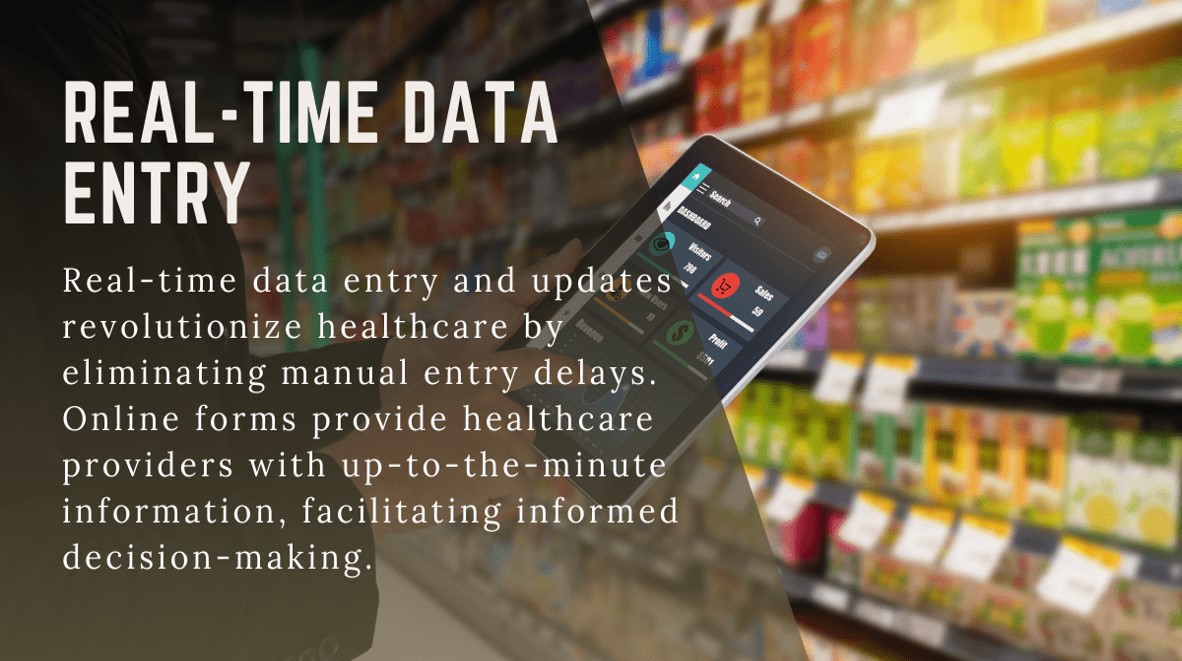
@ShahidNShah


Welcome, esteemed readers, to a comprehensive exploration of the remarkable changes taking place in the realm of healthcare data collection. In a fast-paced world where efficiency is crucial and precision is essential, the transition from conventional approaches to digital solutions has been truly groundbreaking. Today, we explore the essential role of online forms in simplifying the collection of patient data.
Think back to a time when paper was abundant, covered in illegible writing, and stored away in neglected cabinets. This was how patient data collection used to be. The paper-based forms were a constant frustration for healthcare providers, causing inefficiencies and drawbacks. The conventional method presented numerous challenges, including time-consuming processes and the possibility of errors slipping through the cracks.
But what about the issue of safety? Traditional paper forms present a significant concern in a world that is growing more and more focused on safeguarding individuals’ privacy. The process was filled with uncertainty due to the potential mishandling or unauthorized access of sensitive patient information.
Introducing online form builders – the often overlooked heroes in our story. These cutting-edge digital tools completely transform the process of collecting patient data, offering a wide range of advantages.
Imagine a world where you no longer have to endure the frustration of standing in never-ending queues or navigating through mountains of tedious paperwork in a cramped and chaotic waiting area. Patients now have the convenience of completing forms from the comfort of their homes, allowing them to go at their own pace. This digital transformation prioritizes accessibility and convenience.
We have moved beyond the era of laborious data entry and the frustrating delays that came with it. Online forms provide healthcare providers with real-time information, enabling them to make better decisions. The data is constantly evolving, providing healthcare professionals with a powerful, up-to-the-minute stream of information.

Online forms have the advantage of being digital, which eliminates the possibility of messy handwriting or misplaced information. Validation checks help to ensure the accuracy of the entered data, which in turn improves the overall quality of the data. Here, precision is not merely an aspiration; it is an assurance.
Data security and privacy concerns are directly addressed. Online form builders are designed to prioritize the security of your data, implementing strong encryption and ensuring compliance with healthcare regulations. This transition to digital not only simplifies the process but also strengthens the security measures safeguarding patient information.
Now that we understand the advantages, let’s delve into the key elements of a successful online form builder.
Healthcare is a field that requires tailored solutions to meet its distinct requirements, as a generic approach simply isn’t sufficient. Customizing online forms to fit the specific needs of healthcare data collection allows for smooth integration into current workflows.
An ideal scenario would be to have a well-integrated ecosystem where data effortlessly moves between various platforms. Online form builders that seamlessly integrate with EHR systems ensure that patient information is not isolated but rather included in a comprehensive healthcare record.
Both healthcare providers and patients need to be able to easily navigate these forms. An elegantly crafted, user-friendly interface enhances the overall experience for all parties. Emphasizing the importance of user-friendliness, it goes beyond being a mere feature and becomes a guiding principle that influences the design process.
In today’s tech-savvy world, online forms need to be easily accessible on different platforms. Regardless of the device you’re using, it’s important to have a seamless and intuitive experience. Device limitations should not hinder the digital journey.
Let’s pause for a moment and examine some practical illustrations. Many healthcare organizations have eagerly embraced the digital revolution, wholeheartedly adopting online form builders.
Take a moment to appreciate the effectiveness of Mario Hospital, where the introduction of online forms led to a remarkable decrease in patient waiting times. Patients experienced increased satisfaction, while healthcare providers benefitted from improved access to precise and easily accessible information.
Throughout the nation, Zonic Clinic has seen a significant increase in patient engagement since implementing online forms. The accessibility and convenience of remote form completion have brought about a positive change in the relationship between patients and providers.
However, like any transition, there are obstacles to overcome.
We need to go beyond just implementing digital solutions and make sure our defences are strong. Online form builders must have top-notch security measures in place, and healthcare staff should receive proper training on how to protect patient information.
Some individuals who are accustomed to traditional methods may resist the shift from paper to digital. Proper training and support for healthcare staff play a vital role in overcoming this resistance. Change management plays a crucial role in ensuring a seamless transition.
What does the future hold for patient data collection in healthcare?

The potential of Artificial Intelligence (AI) and machine learning to revolutionize data collection, pattern analysis, and insights is truly remarkable. The fusion of technology and healthcare is not merely a fad; it represents a profound transformation.
As healthcare needs evolve and technology continues to progress, these tools will adjust and expand. What is the objective? To further enhance their value in the smooth operation of healthcare systems. The process of evolution is not a singular occurrence; rather, it is a continuous and ongoing expedition.
After thoroughly examining the topic, it’s evident that form builders tools have become essential in the effort to simplify the collection of patient data. The advantages are extensive, the tales of triumph are motivating, and the outlook is full of promise. As we move forward, let’s promote the use of digital solutions in healthcare, creating a more connected and efficient system for the well-being of all. We are now in the age of efficient patient data collection, and it’s more than just a passing trend; it’s a significant shift.

Jennifer J. Stein working at RapidoReach, experienced digital marketer and content writer excelling in successful campaigns across various channels. Expertise in content, SEO, email, and social media marketing, driving conversions. Passionate blogger and tech-savvy.
Source Technology has become an integral part of the healthcare industry after the pandemic. The home care industry is no exception. In fact, it needs to go the extra mile with innovation to fulfill …
Posted Jan 4, 2024 HaH Fundamental Technologies Health Technology Elderly
Connecting innovation decision makers to authoritative information, institutions, people and insights.
Medigy accurately delivers healthcare and technology information, news and insight from around the world.
Medigy surfaces the world's best crowdsourced health tech offerings with social interactions and peer reviews.
© 2025 Netspective Foundation, Inc. All Rights Reserved.
Built on Apr 17, 2025 at 6:07am